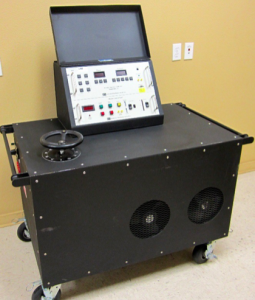By: Keith Armstrong
Primary Injection Testing or Secondary Injection Testing – That is the Question.
If you have been in the electrical power testing industry long enough you have definitely heard this topic batted around the rafters a few times. What is a breaker owner to do? Most have their on thoughts and specifications that guide them but if you are new to breaker testing out Schneider Electrics FAQ on it here.
I personally believe that it comes down to what your ultimate goal is with regard to the power circuit under test as well as the time and financial constraints you are given to accomplish the test. However, local regulations and national standards also play key roles in the decision process so be sure to check with your local testing firms to understand the rules.
If you are only interested in the trip unit itself, then Secondary Injection testing is an accurate choice. However, in doing so, you have not verified the complete power circuit leaving out the current carrying components, CT/Sensors and the wiring to the trip unit. To have a complete and fully functioning trip circuit you need all the components, so should you test all by employing the Primary method? That is the question.
Schneider Electric Full Function Secondary Injection Test Set S33595

There are times when one is preferable to the other depending on factors that may or may not be within your control. You can tell from the summarized chart below that time, equipment availability, expertise and personnel all play a role in your choice.
Secondary Injection Testing:
- Breakers with Electronic trip units
- Easier and faster test
- Usually requires less expertise to preform
- Tests units are small and portable requiring 1 technician
- Less expensive
- Tests only the trip unit
Primary Injection Testing:
- All breakers can be tested
- Time and personnel intensive
- Takes more expertise in reading trip curve and operation
- Equipment is heavy and requires specialized means of transport and 2 technicians
- Cost can be high if not done in scale
- Test the entire power circuit of the breaker
The purists will say that if you have not chosen to Primary Inject breakers, you have failed to prove the entire system viable. They are correct. However, what if you are only given the chance to test a breaker with a small window of opportunity? Experience has shown it would be better to Secondary test and at least prove the trip unit as viable verses doing nothing at all.
Electrical Test Instruments PI6000 Primary Injection
 I personally believe all breakers should be primary injection tested at least once when first put into service. The window of opportunity and chance for scale is usually available when a power system is first installed and can be accomplished during start up and commissioning activities. There is just something about pushing around a huge 1275 pound test set and toting breakers of all sizes that makes you feel like you accomplished something at the end of a long day.
I personally believe all breakers should be primary injection tested at least once when first put into service. The window of opportunity and chance for scale is usually available when a power system is first installed and can be accomplished during start up and commissioning activities. There is just something about pushing around a huge 1275 pound test set and toting breakers of all sizes that makes you feel like you accomplished something at the end of a long day.
Going forward, as your breakers age, I think that the type of test employed is dictated by what so many of us refer to as “Life”. It may not be fair and give you unlimited time, resources, expertise, money and equipment to do a full Primary test but it does give you the ability to reason and weigh the options you have so you can make the best choice at the time.
Whatever choice you make, you can rest assured that there are plenty of options for test equipment and experienced personnel to do the testing. Primary and secondary injection testing of breakers is a cornerstone of the power industry and plays key roles in its continued and safe operation.

